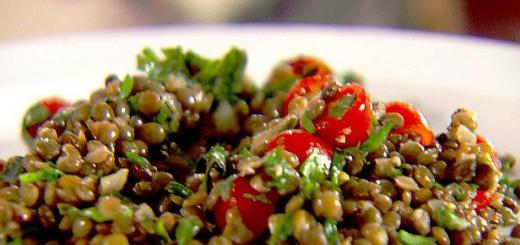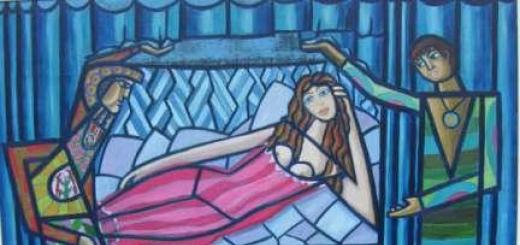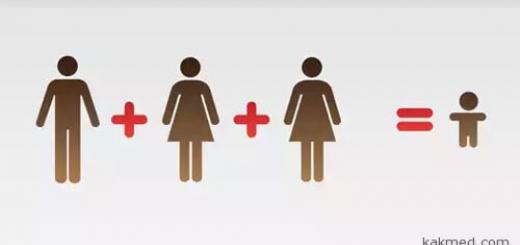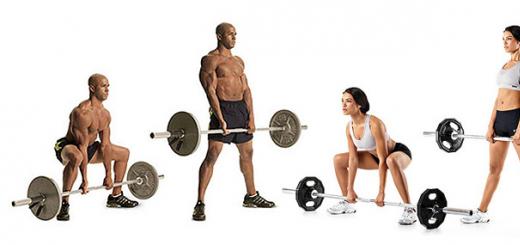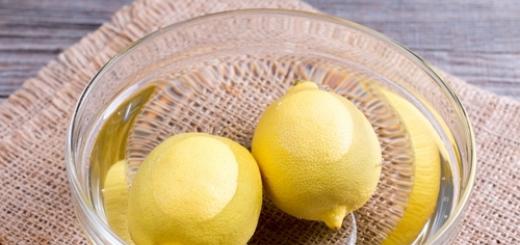In the ratings of popular bedding made from natural materials, products made from camel and sheep wool are traditionally in the lead. It is impossible to unequivocally answer the question which of them is better, because buyers choose things based on personal preferences: some categorically do not tolerate prickly things, others cannot keep warm under a thin blanket, others suffer from allergies, so they choose bedding scrupulously. Which duvet to choose?
Types of wool blankets: woven, non-woven, wool filled
Depending on the manufacturing technology, blankets come with open and closed wool. In the first case, the material is in contact with the skin, in the second case it is hidden in a case. Varieties of woolen blankets:
 Woven wool blanket
Woven wool blanket - Woven. They are made by plain weave of threads, previously cut and combed out to smoothness. These are not blankets, but rather thin blankets. Often, patterns in the form of a cell are applied to their surface. Woven products are soft and light, but cannot keep you warm on a cold winter night.
- Non-woven. They are made by gluing wool and synthetic fibers, resulting in a dense wear-resistant fabric. The density of these products varies between 100–500 g/sq. m, so they can be used both as a blanket and as a winter blanket.
- Quilted with wool filling. In this case, the wool is placed in a case, and the product is sewn with a thick thread so that the filler is distributed evenly and does not stray. Like nonwovens, quilts are used both in summer and winter, making them the most popular types of woolen blankets.
 All season quilt
All season quilt Who is not suitable bedding made of natural wool?
The main danger of using wool bedding is the risk of developing an allergic reaction. You should not buy such things for people suffering from bronchial asthma, allergies to dust or pet hair. If a person does not suffer from these diseases, but he has been diagnosed with intolerance to other components, before buying, you need to do an express test for an allergic reaction - “walk” among the racks with woolen textiles, touch it with your hands. If it does not cause a rash or other unwanted symptoms, the item can be bought.
Properties of sheep wool
 Sheep wool duvet filler
Sheep wool duvet filler Despite the fact that modern synthetic fillers are in no way inferior to natural fillers, and sometimes even surpass them in terms of performance, people often prefer sheep wool blankets. This material is valued for its softness and good thermal conductivity, allowing you to create comfortable conditions during sleep. These properties are imparted to the material by lanolin, a wool wax characterized by anti-inflammatory and stimulating effects - it eliminates joint pain and improves blood flow.
Advantages of a sheep's blanket
The value of such a blanket is determined by such properties as:
 Sheep wool blanket
Sheep wool blanket - high hygroscopicity - even if a person is hot under such a blanket, he will never sweat;
- good breathability;
- antistatic;
- high thermal conductivity, allowing you to maintain a comfortable microclimate during sleep;
- hygiene - a high content of lanolin prevents the material from being damaged by pathogenic flora;
- the ability to self-cleaning - even though the blanket literally “repels” dirt from itself, you need to periodically shake it off the dust and ventilate it;
- affordable price.
One of the advantages of a sheep blanket is the ability to support comfortable temperature body and the possibility of use at any time of the year. It is necessary to select a product of optimal density.
To determine the thermal conductivity of a blanket, you need to look at the number of circles on the label. Blankets for the warm season are marked with one circle, blankets that are used in winter in a heated apartment are marked with two and three, and very warm products for use in harsh climatic conditions are marked with four and five.
Are there any disadvantages?
Despite a lot of advantages, experts recommend carefully choosing a sheep blanket. Perhaps you should look at other materials. Cons of using a sheepskin blanket:

- allergies, including due to the fact that sheep's wool is an ideal environment for dust mites;
- a specific smell due to animal fat (such a blanket should be aired after purchase);
- some difficulties with care - the blanket cannot be washed and moistened abundantly, therefore a duvet cover is necessarily put on it, and heavily soiled things are dry-cleaned;
- great weight.
Blankets made of camel hair or down
The main advantage of camel hair and down is the special structure of the fibers: they are hollow inside and smooth outside. Thanks to this feature, these fibers are light and soft, but at the same time strong and elastic.
Camel wool is a more environmentally friendly material than sheepskin, because it does not lend itself to any chemical treatment and is not dyed, so these blankets are suitable even for babies.
What is the difference between down and wool?

The difference between camel down and wool is that the first material is soft and pleasant to the touch, the other is rough and prickly. Camel down is the undercoat of a camel, which prevents hypothermia. This material is often used to make baby blankets. Wool is the outer coat that protects the animal from injury. Despite different tactile sensations, both fibers have good thermal conductivity and hygroscopicity.
Positive Qualities of Camel Blanket
Camel blankets are characterized by the same advantages as products made from sheep's wool. They also pass air well, absorb moisture and provide a comfortable microclimate - under a camel blanket it is not cold in winter and not hot in summer. Other advantages of camel blankets:

- low risk of developing allergies;
- one of the highest rates of thermal conductivity among all natural materials, allowing a person to instantly warm up;
- environmental friendliness;
- antistatic;
- light weight;
- easy healing effect - the blanket warms sore joints and massages the skin, accelerating blood flow;
- good wear resistance - the product lasts at least 10 years, and with careful operation, the item can last several decades without losing its properties.

Disadvantages of products made of wool "ship of the desert"
It may seem that the camel blanket has almost no flaws, but it is not. Like any wool product, a camel blanket requires proper care. Unlike lambswool bedding, they can be washed, but in extreme cases and on a delicate cycle with a soft gel and no wringing. Washing should not be abused, because because of this, the thing falls off and loses its properties. Other disadvantages of camel blankets:

- limited color palette - from white to brown;
- unpleasant tactile sensations - products made from the wool of an adult animal are prickly;
- high price.
Comparison of sheep and camel wool blankets: which is lighter, warmer and less prickly?
Both types of blankets have their pros and cons, so the question arises: which one is better to choose? Both blankets keep you warm in cold weather, are characterized by good wear resistance and do not require complicated care. In order not to make a mistake with the choice, it is recommended to proceed from the purpose of use (for sleeping, gatherings on the veranda in the evening or in an armchair in front of the TV, etc.) and the price of the blanket. To decide which wool has best performance, it is recommended to use the table of the ratio of the main properties of each material:

| Sheep's wool | Camel's wool | |
| The weight | Medium weight but warm winter duvet is bulky and heavy | Due to the hollow structure of the fibers, the blanket is much lighter than a sheepskin product of the same size. |
| Thermal conductivity | High thermal conductivity, allowing you to retain heat and add up to 5 degrees to the body temperature of a sleeping person | Warms better than a sheep's blanket and allows you to instantly warm up |
| Tactile sensations | Soft and pleasant to the touch | Depends on the type of material (down or wool) and the age of the camel. The undercoat of young camels is soft and pleasant to the touch, while the hair of adult animals is prickly. |
| Deformation resistance | Thanks to the curled fibers, sheepskin is more resistant to deformation than many natural fillers. | Resistant to deformation and can last for decades with proper care |

When a person cannot decide which blanket to choose, if funds allow, it is better to buy 2 products: dense camel wool for cold winter nights and thin woven sheep wool for the warm season. No need to refuse to buy, if the material is prickly, you can just put on a duvet cover. This will not only relieve discomfort, but also make the blanket even warmer and help maintain its operational properties for a long time.
A comfortable blanket can provide a sound healthy sleep. People hide under it from the coolness of the night, wrap themselves up on winter evenings. But even in summer it is more pleasant for many to sleep under a coverlet.
Types of blankets and their advantages
There are many types of products, including artificial ones. But we will touch on options made from natural materials. To figure out which blanket is better - camel, sheep or bamboo, it is worth taking a closer look at their features.
Bamboo
Fillers made from bamboo fiber have appeared on the market relatively recently. This plant does not have its own natural fibers. Therefore, to create raw materials suitable for the manufacture of bedding, bamboo is processed by a special method and pulled into threads.
Models made of such material won their fans in a short period of time, because in quality they are close to silk products - they let air through, absorb excess moisture, and retain their shape. Bamboo species are environmentally safe for health, but one should not expect a beneficial effect from them.
Benefits of bamboo:- hygroscopicity;
- environmental friendliness;
- breathability;
- softness;
- antibacterial properties.
- fragility - the average service life of 2 seasons;
- high price;
- not very warm.
Sheep

Sheepskin is considered not only warming, but also healing. It has been used for many centuries for the prevention and treatment of various ailments. It contains a substance called lanolin. With prolonged contact with the human body, it has a beneficial effect on the condition of the joints and skin.
Useful qualities, as well as warming ones, do not disappear even after heat treatment of products. But, if we talk about which wool is better and warmer - camel or sheep, the answer will be the first option. Characteristics of sheep wool:
Pros:
- environmental friendliness, natural fiber;
- keep warm;
- not electrified;
- slightly deformed;
- hygroscopicity;
- breathability;
- antibacterial properties.
- twice as heavy as camel;
- harder to care for than a bamboo blanket.
camel

Camel wool - a material popular not only in the east - surpasses raw materials from sheep in its characteristics. Of course, the answer to the question becomes obvious - which is better, camel hair or bamboo.
In addition to being able to warm up on cold winter nights, such a thing is also suitable for use in the summer.
Positive characteristics of camel wool:- Light weight - half as much compared to the sheep counterpart.
- Heat balance - the hairs have a porous structure, so the sheltered body warms well, but at the same time does not overheat.
- Animal wax lanolin, the natural antiseptic mentioned earlier, is also present in this raw material. It is not washed out during processing and has a beneficial effect on the children's and adult body, improves blood circulation, and stabilizes metabolism.
- Practicality - products are durable. Service life reaches 15 years.
- Hygroscopicity - the ability to quickly absorb moisture and dry in a short time.
- Does not accumulate static electricity, unlike artificial types.
- Elasticity, preservation of the original shape.
- Breathability - the cover is able to "breathe", provides air circulation.
- Products are absolutely eco-friendly and natural.
- Camel wool does not cause allergies, redness or itching.
- It will help in the fight against insomnia, problems with pressure, improve blood circulation and increase immunity when you sleep.
Minuses:
- the only downside is the cost. But such a product will serve you for many years without losing its positive characteristics, in the end you will only save.
Manufacturers offer two types of sewing:
Open(felted). The blanket is outwardly similar to woven, but several times softer and lighter. It can be used as a blanket or blanket.
The disadvantage of open-type blankets is a modest choice of colors. Most often, manufacturers offer models in a palette from beige to brown. But this rather speaks of dignity - the material is difficult to stain, so there are no additional impurities in it.
Closed(quilted). Dehaired camel hair is placed in a fabric case.
When choosing wool-filled quilts, opt for whites: they won't show through any color of bedding.
Some buyers are considering other filler options: what will be more effective in a blanket - swan down or camel hair? Obviously, the decision depends on the personal wishes of the person, but the second option is always warmer and more durable.
How to choose a blanket Manufacturers
We have already found out what are the main properties of the described options. When deciding which blanket to choose - bamboo or camel, so that it is warm and safe under it, it is worth stopping at the material of animal origin. It remains only to understand which manufacturer to give preference.
Of course, first of all, it is important to look at the quality of products, but it is also useful to evaluate the reputation of the company. It is wiser to purchase goods from well-established suppliers.
If a brand values its reputation, it will not allow low-quality products with bad fillers or harmful paints to go on sale.
To understand which camel wool blanket is better to buy,It is useful to pay attention to the following factors:
- uniformity - the hairs should not be knocked out of the cover;
- cover - must correspond to the contents, ideally - sewn from natural fabric;
- the age of the raw materials - the fillers will be softer and warmer, for which the material is taken from young individuals;
- cost - a quality product is always expensive, so beware of tempting low prices;
- density - the higher this indicator, the warmer the product will be;
- processing quality - evaluate the evenness of the seams, there should not be protruding threads anywhere;
- special pocket - in quilted blankets there is a pocket where you can see the filler;
- quality certificate.
Care rules
Imagine that you have already purchased a product. You can use. But the blanket needs to be properly looked after. In this case, it will delight for many years with its softness, warm the owners.
How to wash a camel wool blanket
Sooner or later, the accessory will become dirty and require cleaning. In this regard, people are wondering if it is possible to wash in washing machine camel blanket or plaid.
Ordinary powder is not suitable. It is necessary to use special products for yarn or sensitive products.
Before you start washing in the machine, look at the label. Sometimes there are special conditions. If there are no restrictions, you can use the delicate mode.
In other situations, you will have to resort to manual labor. In this case, the product must first be soaked in water heated to a temperature not exceeding 30 ° C. After 20 minutes, the water must be drained and hung to drain the water and air dry in an area where there are no direct sun rays.
Now you know if a camel wool blanket can be washed. This is a rather laborious process, because when wet, the thing becomes very heavy. If possible, it is better to give it to dry cleaning.
We determined which blanket is warmer - camel or bamboo. We figured out what are the advantages and disadvantages of certain things, learned how to choose and care for them. Use these tips to keep you warm and comfortable in bed.
Reading time: 7 minutes
Camel wool blanket - perfect solution to ensure a comfortable sleep. This is a traditional, proven material for centuries and harsh conditions. Why is it appreciated, and what to look for when buying - let's take a closer look.
It can be:
- with open wool (woven or fur);
- with closed when the filler is in a fabric case (quilted, cassette or karostep).
 The main unique properties of camel hair are hidden in every hair, more precisely, in its emptiness. In the middle of each is air. The inner surface of the villi is able to easily absorb moisture, and their outer side has water-repellent properties.
The main unique properties of camel hair are hidden in every hair, more precisely, in its emptiness. In the middle of each is air. The inner surface of the villi is able to easily absorb moisture, and their outer side has water-repellent properties. For a closed type of product, it is necessary to pay special attention to the composition of the cover fabric, which must be, firstly, natural, and secondly, durable.
The most popular are satin, teak and silk - these fabrics also have hygroscopicity, the ability to thermoregulate, breathability, due to which they maintain the properties and characteristics of the blanket, and do not extinguish them.
How to choose a camel wool blanket
When choosing a product, it is important to study the main characteristics, as well as the positive and negative qualities encountered in the precess of operation. In addition, pay attention to the methods of care, because buying a blanket, the care of which will cause great difficulties, is only after weighing all the pros and cons.
pros
- Thermoregulation.
Camel wool has exceptional heat-regulating properties.
The camel's habitat is characterized by huge temperature fluctuations, so its wool is unique and does not lose this property in a blanket - in cold weather it warms and retains heat, and in hot weather it protects from overheating and gives the necessary coolness.
- Breathability.
Due to their structure, the products perfectly pass air, have "breathing" properties and provide good air exchange.
- Wear resistance.

It is believed that the service life of these blankets is on average: 7-9 years. However, this is a minimum, there are families in which they serve for decades, being passed down from generation to generation.
- Hygroscopicity.
During a night's sleep, we release about half a liter of moisture. Therefore, it is necessary that bedding absorb it, while remaining dry themselves. Camel cloth is able to absorb up to 30% of moisture from its own weight.
- Ease.
Each bristle is hollow inside, due to which it is very light.
For example, the weight of a woven blanket (plaid) measuring 180x200 cm is only 1300 g. , quilted all-weather blanket 170x200 cm - 2000 gr. For comparison, similar items made of sheep's wool will weigh 2600 and 4000 grams. respectively.
- Healing properties.
Therapeutic effect
- enhances tissue nutrition, improves metabolism;
- neutralizes toxins produced by the body;
- has a rejuvenating effect on the skin, improves skin firmness and elasticity;
- helps to relieve inflammation in the body;
- protects against exposure to electromagnetic fields;
- helps to get rid of pain in arthritis, radiculitis and osteochondrosis;
- improves the functioning of the circulatory system, enhancing blood microcirculation.
Minuses
- May cause allergic reactions.
 There is information that camel hair is hypoallergenic. This is not entirely true. An allergic reaction to the wool itself is quite rare. But the lanolin contained in it is an allergen. It is also loved by various microorganisms, the waste products of which can cause a reaction.
There is information that camel hair is hypoallergenic. This is not entirely true. An allergic reaction to the wool itself is quite rare. But the lanolin contained in it is an allergen. It is also loved by various microorganisms, the waste products of which can cause a reaction. In addition, an allergic reaction may be to chemicals used in dry cleaning.
So people prone to allergies or suffering from bronchial asthma should use these products with great care. It may well be suitable, which is considered safe even for people with bronchial asthma. But it is desirable to refuse.
- Quite difficult to care for.
If washing is allowed, then hand washing is preferable, it requires the use of special means. Must be protected from moths.
- High price.
However, this disadvantage, with proper care, is compensated by the practicality and durability of the blanket.
Manufacturers and price overview
A quality camel blanket cannot be cheap.
The following parameters affect pricing:
- Quality and quantity of raw materials.
It is heterogeneous - consists of outer hair and downy undercoat. Both wool and down are used, which are separated by hand. But the latter is more valued. According to world standards, Mongolian Bactrian down is considered the highest quality.
The most valuable is the down of young non-working camels (Baby camel) for its special softness and lightness. Camel down blankets belong to the elite category, their cost starts from 10,000 rubles.
 Wool is cheaper than down. it is rougher, heavier and tougher. Products from it will cost 3000-7000 rubles.
Wool is cheaper than down. it is rougher, heavier and tougher. Products from it will cost 3000-7000 rubles.
Price 2000-3000 rubles with indication on the label "wool - 100%" - in front of you is most likely a filler from a mixture of camel and sheep raw materials. good manufacturer will indicate the percentage, and it will most likely be 40x60 or 50x50.
Blanket with mixed filler is heavier, more voluminous, but cheaper and still natural.
Cheaper than 1500 rubles - an option with a thermally bonded filler. This is a uniform fabric, for which the wool is passed through a hot roller, where it is glued together with a synthetic fiber. The percentage of the camel component in such a filler is directly proportional to the price of the finished product.
How to choose a camel blanket and not a fake?
Product data
Pay attention to the composition indicated on the sewn-in label. When using a natural component, "camel hair - 100%" should be indicated. If it is written simply “camel”, then the manufacturer hides from you exactly how much wool is there and what kind of technology it will be (most likely, it will be a thermally bonded type of filler).
The manufacturer, who has nothing to hide, will provide complete information about himself, about the composition of the filler, about the fabric of the cover, about the care of the product on a sewn-in label that will retain information for a long time. Pay attention to the quality of workmanship, to the packaging. This can say a lot.
- Blanket assembly method and cover material.
In descending order of price: cassette, karostep-quilted and silk-satin-teak, respectively.
- Manufacturer.
fame, positive reviews and the long history of the manufacturer always increases not only the prestige of the product, but also its value.
Some well-established companies: Billerbeck (Germany), Irisette (Germany), Jork&Larsen A/S (Denmark), Dargez (Russia). 
What color to choose
The colors of products made from open wool do not differ in great variety. This is due to the fact that the camel cannot be dyed, so all colors are the natural color of the animal.
The color range is from white to dark brown (beige, cream, light brown, brick - a total of 14 shades). The color depends on the age and breed of the camel. Most valued White color, since all camels up to a year old have a white color, namely, their wool is characterized by the highest quality.
Despite the apparent monotony, it is these warm and calm natural tones that have the most beneficial effect on the body, as evidenced by the numerous reviews of people who have been using this product for more than one year.
How to use it correctly - with or without a duvet cover?
A duvet cover is essential for everyday use. It performs a protective function, protecting from dust and pollution of various kinds. In addition, it is more hygienic - we wash bed linen much more often than the blanket itself. However, the therapeutic effect is stronger if the skin is in direct contact with the hair. Therefore, if you are the owner of a woven or fur product and want to have a “camel therapy” session, then it is more advisable to remove the duvet cover during the session to ensure direct skin contact with the open product.
In order for the blanket to serve for a long time without losing its positive properties, it is important to follow the simple rules of care:
- washing is allowed, ideally hand washing, but machine washing is also allowed in a gentle mode. The maximum allowable water temperature is 30 degrees C;
- wash better by special means containing lanolin;
- squeeze gently and carefully, without squeezing hard or twisting;
- dry after washing in a horizontal position in a well-ventilated area;
- bed linen, in particular, a duvet cover, should be made of natural fabrics, with good hygroscopicity and breathability;
- at least twice a year it is necessary to air the blanket, preferably on fresh air but keep away from direct sunlight.
- store in a well-ventilated area in a cotton bag, separate from other bedding.
Video review of Tailak camel down blanket.
Which blankets are warmer: camel or sheep? The first thing to be based on when choosing is your own feelings. Before buying, you should also study the properties of these bedding, the rules of care, how durable their use will be. This knowledge will help you make a purchase without additional checking the blanket.
The structure and benefits of sheep's wool
Sheep wool used to fill blankets has many valuable properties. It began to be used a long time ago, in particular, to leave premature babies.

What are bedding made from sheep wool:
- heavier than camels;
- cost twice as much;
- they are difficult to care for. Avoid washing at home. because of hot water sheep's wool will turn into a dense felt, cold will not be able to remove severe dirt. The only way out is dry cleaning.
To create blankets, coarse-haired breeds of sheep are selected. When combing them, not only hard hair is removed, but the undercoat, which has softness and fluffiness. Blankets are made from this material.
Coarse wool sheep will give much more weightless fluff than merino, which is soft all over the wool.
Sheep wool hairs are twisted into curls. The things created from them are elastic. They are more pleasant to the skin than camels, as they do not prick. This bedding is suitable even for a child.
To figure out which blanket will be really warm, the labels placed on the product will help. This is true only for high quality products. They are filled with color circles. They determine the ability of the product to warm a person in different seasons:
- One circle is a light sheep blanket, suitable for summer.
- Two is the standard.
- Three - can be used in all seasons, but in winter only in rooms that are heated.
- Four - a warm blanket.
- Five - very warm, retains heat well inside.
The structure and benefits of camel hair
Different fillers have different hygroscopicity. This point is important, because sleeping, sweating heavily under a heavy blanket, is not particularly comfortable.
Accessories made of camel wool absorb moisture very well. They also have other benefits:

- Good air conductivity - lying under it, a person will not rise up.
- The ability to absorb sweat and then bring it out through the microchannels inside the camel hair (evaporation process).
- Keeping clean for a long time. Camel blankets do not require frequent cleaning.
- They do not absorb bad odors.
- Do not accumulate static electricity inside.
The described properties are due to the structure of camel hair. Inside each hair is a void. Due to this, an air cushion is formed, which provides thermoregulation, the absence of overheating of the body. For this reason, the camel calmly endures powerful desert temperature fluctuations.
Good absorption of moisture also has an explanation. Inside, camel hair is made up of small villi. They, forming a capillary effect, remove moisture from the body to the outside. Outside surface hair, in turn, does not allow the liquid to penetrate inside.
A camel blanket can absorb about a third of its original weight in moisture, but the person sleeping under it will not feel it.
A blanket has all these virtues if the wool from which it was made is taken from a young camel. Adult animals are also combed out, but the raw material is coarse, has a specific smell, and is not suitable for making camel blankets.
Types of wool blankets

Woolen bedding made from camel or sheep wool is available on the market in three varieties:
- fur;
- whole-woven;
- quilted.
Fur
In some cases, one side of a camel blanket or sheep wool product is covered with fur. The thing is very soft and warm. Many models can be washed by hand.
If the water icon is crossed out on the label of the fur blanket, only dry cleaning is allowed.
Whole-woven
The product is created from a rather thin, but strong woolen material. It can be washed by hand. The stores sell options that are allowed to be washed in a typewriter.
Quilted
The canvas of quilted camel or sheep bedding is completely covered with fabric and then stitched. Because of this, the wool is distributed evenly, does not roll down during the entire period of use. Hand washing allowed.
Thickness Matters

The thickness depends, first of all, on the weight of the blanket, as well as how well it will retain heat inside. Thin camel linen is nice to hide in warm seasons. For the winter good choice becomes a thick bedding.
In camel fillers, the thickness index ranges from 200 grams per square meter to 400-odd grams. These common parameters are considered very useful. They will help to keep warm on a cold day to a person who is in a cool room.
Closed-type quilted sheep's accessories are also thick, very warm. They are created from a layer completely filled with wool and a fabric cover stitched together.
The thicker the wool layer, the better. Sheep wool products are easily selected for any season. There are light, not too thick (100-150 grams per square meter), universal (250-300), standard (350-400). The thickest reach up to 800 grams per square meter.
Conclusion, which is the warmest

All that is described above allows us to come to a logical conclusion. When buying the warmest woolen blanket, you should opt for models filled with sheep's wool. This is a very good option for people who prefer to relax in high temperatures. Bedding with this filler is also recommended for small children, people with allergies, asthmatics.
If the main requirement for the buyer is warmth, it is worth stopping without hesitation on models with sheep's wool. They are not only comfortable, but will easily fit into any interior, turn into an original accent.
Camel stuffing is a solution for lovers of not so much the warmest as light natural bedspreads.
For such a weightless, healing product, you will have to pay a lot. The money spent will quickly pay off as soon as the owner of the thing feels the effect of its many properties.
The most important attribute of a good and healthy sleep is a blanket. It must be properly selected in order to retain heat without creating a greenhouse effect. It is also worth remembering that you need to pay due attention to those models that do not require care. extra hassle. All of these qualities have camel wool blankets, which have long been gaining popularity among buyers. From this article you will learn what a camel wool blanket is, which company is better and whether it is worth buying.
Making the right choice
The most popular camel wool products are blankets. No wonder, because such a thing is very high quality and durable. To make the right choice, you must follow these recommendations:
- Make sure that the “age” of the camel is small. The warmest and softest blankets are made from the wool of young animals, because their wool is very similar to bird down.
Important! Many manufacturers indicate that their products are made only from camel down.
- Pay attention to non-tactile sensations. Feel the blanket - it should not be prickly. Quality products should not prick even without a duvet cover.
- It is important that the bed attribute is uniform. Hairs should not fall out of the finished product. On the contrary, it should be so that it would be problematic to pull them out.
Important! If it is difficult to pull out the villi, then the felting technique of the product was very high quality.
- The best manufacturers of camel blankets carefully work the edges of their products and make sure that they are even.
- Pay attention to the cover. It is often attached to a camel blanket and is usually made from cloth. Make sure the fabric is natural.
- Decide in advance which product you want to purchase. Thicker blankets are most often used in winter, and less dense blankets are most often used in summer.
Important! The density of the camel can be found on the label.
- One of the main points when choosing is the price. As a rule, products made from camel wool are much cheaper than products made from sheep wool or down. For this reason, quality products simply cannot have a low price.
Advantages and disadvantages
Camel wool products are leaders in their segment. It is not surprising, because they have a huge number of advantages, because of which they have become popular:
- Lightness is perhaps the most important plus of this product.
- High heat retention - such products can only be compared with down.
- Durability - These blankets will last you from 10 to 30 years.
- Hygroscopicity - products made from such wool perfectly absorb moisture and quickly evaporate it.
- Elasticity - they keep their original shape for a very long time.
- They do not form static electricity, which cannot be said about other materials.
- Good air circulation.
Before you choose a camel wool blanket, you need to understand its shortcomings. They are few, but they exist:
- In rare cases, the bed attribute may prick.
- Allergies may occur.
- High price.
Popular manufacturers
Both domestic and imported products are presented on the domestic market. Consider which company is better for a camel wool blanket so that you can evaluate in the store how quality products differ from fakes:
- GOBI are blankets made from the wool of Mongolian camels, which is considered one of the best. This brand is popular all over the world. Not surprising, because the quality of products in combination with the price are among the most acceptable.
Important! This product is 100% natural, it does not contain any synthetic impurities.
- AlViTech is a Russian product. Blankets of this brand are made in the Moscow region and have many warm and lightweight varieties.
- Aelita is a company in Ivanovo. They have both lightweight and thickened models. Covers are made only from natural materials.
- Runo - another Russian manufacturer with quality home textile products.
- Dargez is a concern that focuses on the production of home textiles. It produces high-quality products from camel wool: "Sahara" - for adults, "Camel" - for children.
- Lyzheboka is a domestic manufacturer that produces quilts for all seasons. The products are made from the down of the Mongolian camel.
How to care?
In order for the selected camel blanket to serve you for the maximum period, we recommend that you follow some simple care rules:
- Always use a duvet cover.
- The newly bought “camel” needs to be kept in the fresh air for an hour so that it can get oxygen. The same procedure should be repeated about once every six months.
- Follow the washing instructions.
- Use specially designed balms for wool products.
- Dry only on a horizontal surface, in the fresh air. Make sure there is no direct sunlight.





